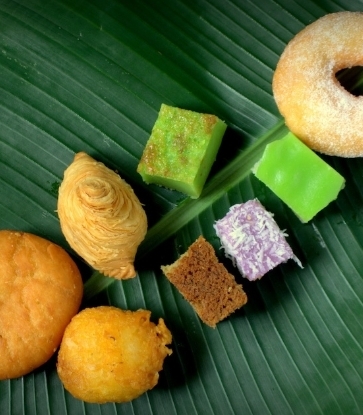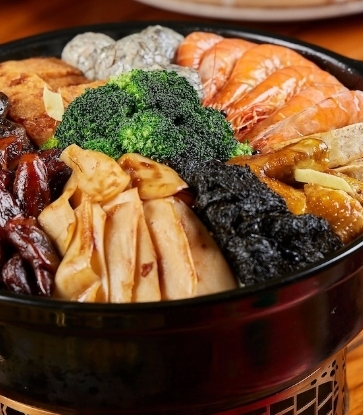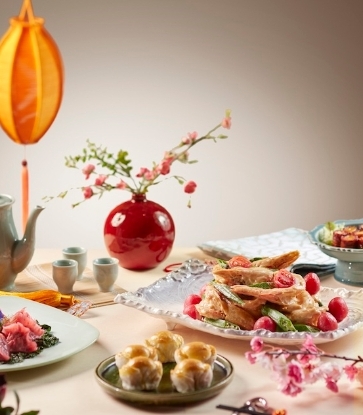1. Pen Cai
Pen cai or fortune pot takes centrestage at the dining table this feasting season. Eight is the magic number for this dish, which symbolises wealth and abundance. Pen cai comprises eight main seasonings and cooking techniques, and the dish is stacked with eight layers of premium seafood ingredients. The eight seasonings include preserved beancurd, fennel powder and cinnamon, while cooking techniques include pan-frying, deep-frying and braising.
The first rule of eating pen cai is to eat from the top to the bottom layer of the pot. Each layer of food needs to be finished before proceeding to the next. The best is saved for the last at the bottom, which houses radish, mushrooms and bean curd skin that are soaked with gravy and juices from the top layers for a longer period of time.
A Hakka dish, pen cai has humble roots as a dish for starving soldiers served in wooden basins during wartime dating back to the Song Dynasty in AD1132 to 1279.
Suckling pigs are synonymous with celebrations in Chinese culture such as weddings, birthdays and especially Chinese New Year.
A Cantonese dish, suckling pig is a dish with aristocracy roots, being a mainstay in court banquets in the Qing Dynasty and an epicurean treat for centuries. The pig is always presented "as a whole" which symbolises completeness and is an auspicious sign.
According to a folklore, the suckling pig came about quite by accident. A home owner stumbled upon a cooked pig after a fire razed his home, and was struck by its aroma.
Cylinders of banana leaf-wrapped brown sticky rice cakes are a common sight in many homes - whether people eat it or not. The pronunciation of the sticky glutinous rice cake translates to ‘a promise of a ‘higher’ or better year’.
There are various ways of enjoying nian gao. Popular methods include steaming the cake with a sprinkling of desiccated coconut, pan-frying thin slabs of nian gao with egg and flour and cooking the sticky cake in a soup.
The raw fish salad dish, which means raw fish in Chinese, is the definitive symbol of good luck, prosperity, good health and good tidings for Chinese New Year. The communal vibrant-looking dish comprises slivers of raw fish (saito and salmon) and julienned pickled vegetables such as carrots, white radish, green radish, cucumbers, ginger and onion slices, pomelo. The melange is drenched in oil and plum sauce, followed by a showers of peanuts and pok chui crackers.
Diners typically add the various components of the salad in a specific sequence, and each ingredient carries an auspicious meaning that is linked to a Chinese couplet. Then let the (messy) tossing begin coupled with spouting of auspicious sayings.
Yu sheng has roots as a raw fish dish in Guangdong, China and it has morphed over the years with more ingredients and sauces added to raw fish. The popularised version, qicai yusheng (七彩鱼生) is believed to be the brainchild of four Singapore chefs, who are dubbed the ‘four heavenly kings’ and was first served at Lai Wah Restaurant in Bendemeer in the 1960s. The lo hei practice has since spread to areas such as Hong Kong.























